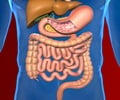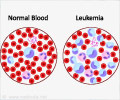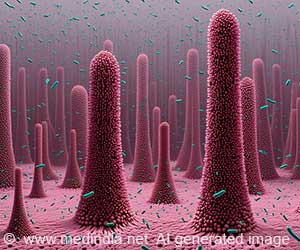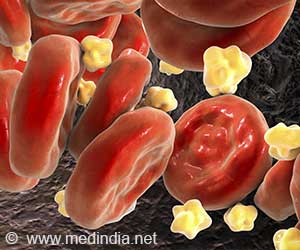Radiomics, a field of study that systematically extracts patterns from CT scan images and then measures these patterns using artificial intelligence, has been found useful to predict patients’ response to chemotherapy in lung cancer.
Highlights:
- Radiomics is a science that uses algorithms to extract patterns from CT scan images which are not visible to the naked eye. These unique patterns are quantitatively assessed by using artificial intelligence to identify those patients who are likely to respond to chemotherapy in non-small cell lung cancer
- The standard first-line treatment of advanced-stage non-small cell lung cancer (NSCLC) is platinum-based chemotherapy. However, only about 25 percent of patients respond well to this therapy, and currently there is no way to predict who will respond and who will not
- CT scans are routinely used in cancer patients to stage disease and monitor response to treatment. The field of radiomics can, therefore, be ideally used to identify patients who are unlikely to respond to chemo so that alternative treatments such as radiotherapy and immunotherapy can be planned for them
TOP INSIGHT
Using artificial intelligence to analyze unique radiomic image patterns, scientists were able to identify those patients likely to respond to chemotherapy in advanced-stage non-small cell lung cancer (NSCLC). In addition, radiomic data analysis also predicts the risk of progression, overall survival and patients at increased risk of recurrence.
Read More..
Predicting Response to Treatment in NSCLC Using Radiomics
The study team set out to identify the role of radiomic patterns both within the lung tumor as well as a peri-tumor area to predict response to chemotherapy, overall survival as well as the risk of progression in patients with non-small cell lung cancer (NSCLC).- The study included 125 patients treated in Cleveland Clinic with pemetrexed-based platinum doublet cancer treatment
- In this randomized study, the participants were grouped randomly into a training set and validation set. The training set had 53 patients with NSCLC, while the validation set had 72 patients
- The training set included equal numbers of patients who had responded to NSCLC chemotherapy (responders) and an equal number of patients who had not (non-responders)
- A computer analyzed the CT scans of lung cancer to pinpoint unique patterns of heterogeneity both inside as well as the area around the tumor
- These image patterns were then matched against the CT scans of both responders and non-responders and these unique feature patterns present were then used to train a machine learning system to identify those patients who were likely to respond to chemotherapy
- The results demonstrated that the radiomic patterns derived from both within the tumor and the area around the tumor were able to differentiate between patients who responded to chemotherapy from those who showed no response
- Also, the radiomic features were able to predict the rate of progression and overall patient survival
- When patterns within the tumor alone were analyzed, the accuracy of prediction was 0.68 but when patterns both within the tumor and peri-tumor area were analyzed, the accuracy went up to 0.77
"This is the first study to demonstrate that computer-extracted patterns of heterogeneity, or diversity, from outside the tumor were predictive of response to chemotherapy," Dr. Khunger said. "This is very critical because it could allow for predicting in advance of therapy which patients with lung cancer are likely to respond or not. This, in turn, could help identify patients who are likely to not respond to chemotherapy for alternative therapies such as radiation or immunotherapy."
Although, the possible reason for the difference in response to chemotherapy is not clear, the study team believes that increased fibrous tissue content of tumor may make it more responsive to chemotherapy.
Summary
Analyzing unique radiomic patterns of CT images can help predict patient response to chemotherapy in lung cancer as well as rate of progression and risk of tumor recurrence. This information will help treating doctors plan management accordingly.Reference:
- Combination of Peri- and Intratumoral Radiomic Features on Baseline CT Scans Predicts Response to Chemotherapy in Lung Adenocarcinoma - (https://pubs.rsna.org/doi/10.1148/ryai.2019180012)
 MEDINDIA
MEDINDIA




 Email
Email










